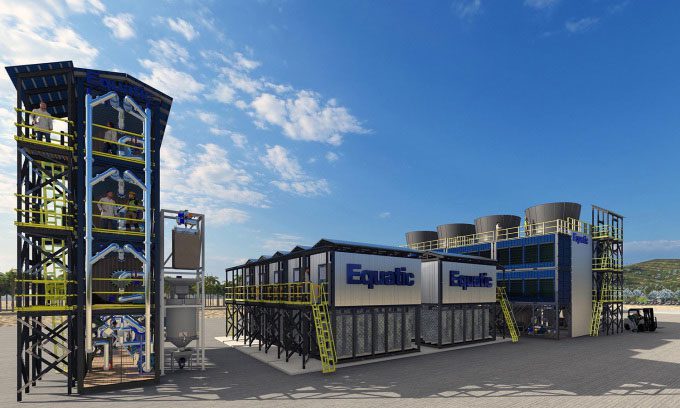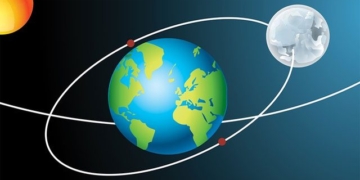The Equatic-1 Plant is Expected to Use Electrolysis Technology to Remove Up to 10 Tons of CO2 Daily from the Ocean and Atmosphere.
The University of California, Los Angeles (UCLA) is collaborating with the National Water Agency of Singapore and other agencies to build Equatic-1, the world’s largest ocean CO2 removal plant, as reported by New Atlas on February 29. The plant is projected to eliminate 3,650 tons of CO2 annually while producing 105 tons of carbon-negative hydrogen.

Simulation of the world’s largest ocean CO2 removal plant, planned to be built in Singapore. (Image: Equatic).
The Equatic-1 Project follows the successful implementation of two pilot systems for CO2 removal from the sea in Los Angeles and Singapore in 2023. This will be a full-scale demonstration plant with an estimated cost of approximately $20 million.
The plant’s process utilizes electrolysis, passing an electric current through seawater from nearby desalination plants. This step generates chemical reactions that split water into hydrogen and oxygen, while safely storing dissolved CO2 and atmospheric CO2 as solid magnesium and calcium-based materials for at least 10,000 years. This process enhances the ocean’s natural CO2 storage capacity by removing dissolved CO2 and allows the ocean to absorb more greenhouse gases.
A team of researchers and experts from the Carbon Management Institute (ICM) and UCLA’s Equatic startup will head to a research and development facility in Tuas, western Singapore, to begin construction of the world’s largest ocean CO2 removal plant in the next 18 months.
The construction of Equatic-1 is planned in two phases, with the first phase starting in March, aiming to remove one ton of CO2 daily by the end of 2024. By early 2025, the installation of an additional nine modules will mark the completion of the second phase. With 10 operational modules, Equatic-1 is expected to eliminate 10 tons of CO2 daily from the ocean and atmosphere.
The pilot plant in Singapore has been deemed successful after removing 0.1 tons of CO2 daily, while Equatic-1 will remove 100 times that amount. Additionally, the technology of Equatic-1 can also simultaneously produce nearly 300 kg of carbon-negative hydrogen each day.
According to the World Bank, the average global CO2 emissions in 2020 were 4.3 tons per capita. Therefore, plants like Equatic-1 could play a crucial role in addressing this emission level.





















































